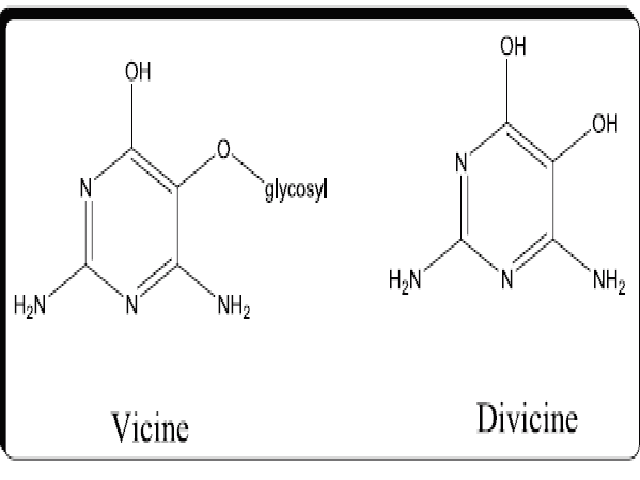Anti-inflammatory Effect of Natural Heterocycle Glucoside Vicine Obtained from Vicia faba L. and its Aglucone (divicine) and their Effect on Some Oxidative Stress Biomarkers in Albino Rats
DOI:
https://doi.org/10.5530/ax.2012.2.2.8Keywords:
Toxicity, Anti-inflammatory, Rats, Vicine and divicine, Fava beans (Vicia faba)Abstract
Background: Inflammation is typically characterized by increased permeability of endothelial tissue resulting in oedema. Much of pyrimidine derivatives have been highly useful for treating acute and self-limited inflammatory conditions. This study was performed to explore the acute toxicity, anti-inflammatory activity and biochemical effect of natural heterocycle pyrimidine glucoside vicine obtained from Vicia faba L. and its aglucone (divicine) and their effect on some oxidative stress biomarkers in Albino rats. Also, the anti-inflammatory effect of the tested compounds were compared with diclofenac sodium (100 mg/kg bw). On the other hand, this article was extended to assess the impact of a very high dose of diclofenac sodium (100 mg/kg bw) on liver enzymes, which was used by many authors to explain the negative effects of diclofenac when used at this dose as a standard anti-inflammatory drug. Methods: The median lethal dose (LD50) and histopathological effects of vicine and divicine was determined in order to assess their safety. Also, the inflammatory effect of the tested compounds was examined at doses (50–200 mg/kg bw) in rats, using fresh egg albumin-induced oedema and compared with standard anti-inflammatory drugs, diclofenac sodium (100 mg/kg bw). Finally, vicine and divicine treatment (50–200 mg/kg bw) was evaluated for 10 consecutive days prior in Albino rats in the serum levels of hepatic enzymes, glutamate oxaloacetate transaminase (GOT), glutamate pyruvate transaminase (GPT), gamma glutamyl transferase (γ-GT), alkaline phosphatase (ALP), lactate dehydrogenase (LDH), super oxide dismutase (SOD), reduced glutathione (GSH), glutathione peroxidase (GPx) and thiobarbituric acid reactive substances (TBARs). Results: Vicine and divicine were found to have an LD50 of 2100 and 1950 mg/ kg bw orally, respectively and a significant (p < 0.001) dose-dependent anti-inflammatory activity with the highest percentage inhibition (59.56%) and (45.65%) for vicine and divicine, respectively, at 150 mg/kg against the fresh egg albumin-induced oedema in rats after 180 min. Also, the standard anti-inflammatory diclofenac sodium (100 mg/kg) showed 100% inhibition against the fresh egg albumin-induced oedema in rats after 180 minutes. In addition, administration of vicine and divicine orally to the rats at doses of 50–200 mg/kg bw for 10 days showed non-significant changes in liver enzymes and serum TBARs as compared with the control group. But administration of diclofenac sodium orally at a concentration of 100 mg/kg bw daily for 10 consecutive days to rats showed significant increase in liver enzymes and serum TBARs and significant decrease in blood GSH, SOD and GPx. Histopathology of the rat liver morphology of all the treated groups showed no disorder except for the photomicrograph of the cross section of liver from rats treated with diclofenac sodium 100 mg/kg for 10 consecutive days, shows pronounced dilatation of the hepatic portal vein. Conclusion: The observation allows conclusion that vicine and divicine at concentration of 50–150 mg/kg bw exhibited good anti-inflammatory effect and have no hepatotoxic activity.
Downloads
Metrics





